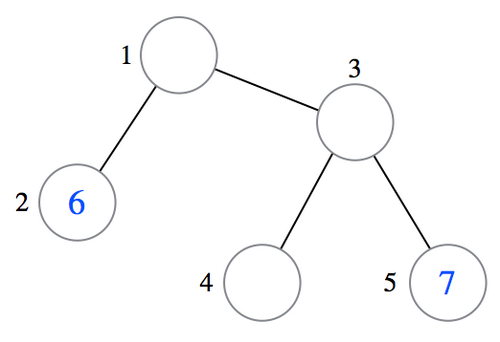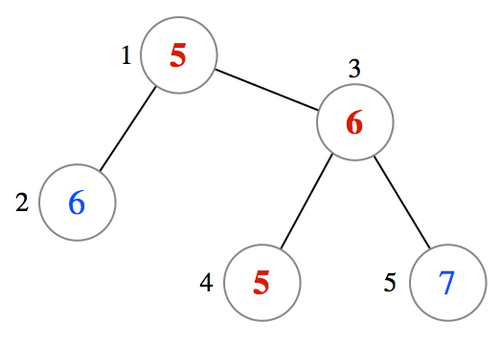atcoder#ARC063C. [ARC063E] 木と整数
[ARC063E] 木と整数
Score : points
Problem Statement
We have a tree with vertices. The vertices are numbered . The -th () edge connects the two vertices and .
Takahashi wrote integers into of the vertices. Specifically, for each , he wrote the integer into vertex . The remaining vertices are left empty. After that, he got tired and fell asleep.
Then, Aoki appeared. He is trying to surprise Takahashi by writing integers into all empty vertices so that the following condition is satisfied:
- Condition: For any two vertices directly connected by an edge, the integers written into these vertices differ by exactly .
Determine if it is possible to write integers into all empty vertices so that the condition is satisfied. If the answer is positive, find one specific way to satisfy the condition.
Constraints
- ()
- () (21:18, a mistake in this constraint was corrected)
- ()
- The given graph is a tree.
- All are distinct.
Input
The input is given from Standard Input in the following format:
Output
If it is possible to write integers into all empty vertices so that the condition is satisfied, print Yes. Otherwise, print No.
If it is possible to satisfy the condition, print lines in addition. The -th () of these lines should contain the integer that should be written into vertex . If there are multiple ways to satisfy the condition, any of those is accepted.
5
1 2
3 1
4 3
3 5
2
2 6
5 7
Yes
5
6
6
5
7
The figure below shows the tree when Takahashi fell asleep. For each vertex, the integer written beside it represents the index of the vertex, and the integer written into the vertex is the integer written by Takahashi.

Aoki can, for example, satisfy the condition by writing integers into the remaining vertices as follows:

This corresponds to Sample Output 1. Note that other outputs that satisfy the condition will also be accepted, such as:
Yes
7
6
8
7
7
5
1 2
3 1
4 3
3 5
3
2 6
4 3
5 7
No
4
1 2
2 3
3 4
1
1 0
Yes
0
-1
-2
-3
The integers written by Aoki may be negative or exceed .
